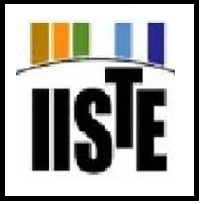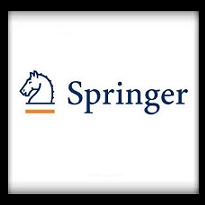دانلود ترجمه مقاله بهبود اقتصادی سوخت در موتور کوچک با زمان بندی متغیر سوپاپ – مجله الزویر
| دانلود رایگان مقاله انگلیسی + خرید ترجمه فارسی
|
|
| عنوان فارسی مقاله: |
زمان بندی متغیر سوپاپ جهت بهبود اقتصادی سوخت در موتور کوچک با اشتعال توسط جرقه |
| عنوان انگلیسی مقاله: |
Variable valve timing for fuel economy improvement in a small spark-ignition engine |
|
|
| مشخصات مقاله انگلیسی (PDF) | |
| سال انتشار | ۲۰۰۹ |
| تعداد صفحات مقاله انگلیسی | ۱۰ صفحه با فرمت pdf |
| رشته های مرتبط با این مقاله | مهندسی مکانیک و مهندسی صنایع |
| گرایش های مرتبط با این مقاله | سیستم محرکه خودرو، بهینه سازی سیستم ها، ساخت و تولید، تبدیل انرژی، طراحی سیستم های دینامیکی خودرو، مکاترونیک، حرارت و سیالات و مکانیک خودرو |
| مجله | انرژی کاربردی (Applied Energy) |
| دانشگاه | دانشکده مهندسی صنایع، دانشگاه کسینو، ایتالیا |
| کلمات کلیدی | موتور SI، VVT، EGR داخلی، چرخه میلر معکوس، چرخش متغیر، انالیز CFD |
| شناسه شاپا یا ISSN | ISSN ۰۳۰۶-۲۶۱۹ |
| لینک مقاله در سایت مرجع | لینک این مقاله در سایت ساینس دایرکت |
| نشریه الزویر | Elsevier |
| مشخصات و وضعیت ترجمه فارسی این مقاله (Word) | |
| تعداد صفحات ترجمه تایپ شده با فرمت ورد با قابلیت ویرایش و فونت ۱۴ B Nazanin | ۲۶ صفحه |
| ترجمه عناوین تصاویر و جداول | ترجمه شده است |
| ترجمه متون داخل تصاویر و جداول | ترجمه نشده است |
| درج تصاویر در فایل ترجمه | درج شده است |
| درج جداول در فایل ترجمه | درج شده است |
| درج فرمولها و محاسبات در فایل ترجمه به صورت عکس | درج شده است |
- فهرست مطالب:
چکیده
۱ مقدمه
۱ ۱موتور
۲ روش عددی
۳ نتایج
۳ ۱ تجزیه و تحلیل جریان ثابت
۳ ۲ تجزیه و تحلیل عملکرد
۳ ۳ تجزیه وتحلیل سیلندر
۱ ۳ ۳ تجزیه وتحلیل گاز
۲ ۳ ۳ تجزیه وتحلیل چرخش متغیر
۳ ۳ ۳ تجزیه وتحلیل احتراق
۴ نتیجه گیری
- بخشی از ترجمه:
بهبود در اقتصاد سوخت، با سيستم جرقه زني كوچك در موتر است كه ناشي از اتخاذ يك زمان بندي متغير در سوپاپ با فشار كنترل شده است كه با استفاده از شبيه سازي عددي يك بعدي و سه بعدي مورد تجزيه و تحليل قرار گرفت. نتايج به دست امده در مورد اين آزمايش، اطلاعاتي را ارئه نمايد. در اين مقاله توضيح داده شد كه موتور تحت مطالعه با فناوري ساده VVT است كه عمدتا جهت بهبود راندمان موتور در قسمت بار مي باشد. بنابراين ، مصرف و فرايندهاي يهينه سازي شده و اتخاذ چنين ويژگي هاي خاص در چرخه ي معكوس ميلر و چرخش داخلEGR وجود دارد. جزئيات حركت در درون سيلندر، با باقيمانده توزيع جرم گاز و مصرف و سوپاپ و پورت است كه در ايجاد حركت سالزمان يافته بسيار بوده است كه در موتور مورد تجزيه و تحليل قرار گرفت. روند محاسبه تعداد چرخش بايد مدنظر باشد. حركت چرخش ضعيف توليد شده و توسط پورت مصرفي در حركت به سوي بالا بوده است. در خالي كه يك چرخش بزرگ توسط جريان برگشتي اگزوز كامل پوشانده شده و دريچه تخليه در حالت كم مي باشد. اين يك نتيجه جالب است. زماني كه نرخ EGR موجود در نقاط موجود شير ، بالا باشد، اين مي تواند براي هردو شكل گاز خروجي و كنترل بار مطلوب باشد، اما نرخ احتراق كاهش يافته و بازده حرارتي موتور در حالي كه شكل گيري Co و H3 مي تواند بدتر شود.
- بخشی از مقاله انگلیسی:
Introduction The European Union has recently signed the Kyoto protocol. Thus, the control of green-house gas emissions has begun to add to the numerous constraints that vehicle manufacturers have to satisfy. The reduction of engine fuel consumption becomes a primary requirement as well as meeting current and future emission legislations. Naturally, talking about reduction of engine fuel consumption means to keep unvaried, sometimes improved, the performance level of current engine production. Dealing with engine topics exclusively, improving fuel economy to reduce CO2 emissions means improving the engine thermal efficiency. As it is usual in engine management, this target can be met following different routes, each of them could be an effective way with different cost-to-benefit ratio. Often, it could be observed, it is helpful to adopt numerous solutions contemporaneously. As an example, fast combustion, lean burn, variable valve timing and actuation, gasoline direct injection and so long may be reminded. During most of its average life, a road engine is run under low load and low speed conditions. It is known that load reduction in spark-ignition engines is traditionally realized by introducing additional losses during the intake stroke by means of a throttle valve. In these operating points, the engine efficiency decreases from the peak values (already not very high) to values dramatically lower. The optimization of intake and exhaust valve timing can provide significant reductions in pumping losses at part load operation [1–۳]. In this paper, the benefit of engine load control performed by using a simple variable cam phaser has been analyzed and the influence of the VVT strategy on the combustion process and engine performance has been evaluated. 1.1. The engine The engine under study (Table 1) derives from a small displacement (1.4 l), 2 valves per cylinder, MPI engine developed in late 1980s. The objective of this paper is to contribute to the development of an up-to-date version pursuing, among others, the target of improving engine fuel economy. To this aim, the adoption of a continuous variable valve timing (VVT) system, able to optimize engine torque and efficiency, has been considered [4]. In particular, the VVT technology here proposed is mainly aimed to the load control and the generation of internal exhaust gas recycle (EGR) rather than to the volumetric efficiency optimization. Due to economic constraints, the engine architecture with a single camshaft for the valve actuation has been kept. A continuously variable cam phaser (CVCP), able to shift the overhead camshaft to retarded positions at constant overlap [5] (Fig. 1), has been chosen. This simple and economic system allows a load control shared between CVCP and throttle. Delaying all valve events, an intensive backflow at the intake end occurs (reverse miller cycle) and a large amount of exhaust gas comes back into the cylinder (internal EGR). Combining reverse miller cycle and internal EGR a significantly high de-throttling effect can be achieved, thus reducing the pumping losses at part load and improving the fuel economy in many driving conditions. Obviously, the engine load control by means of the CVCP system at fully un-throttled operation is limited by the EGR tolerance of the engine. In order to improve this engine characteristic at medium and low loads, when the engine is operated at high EGR rate, a particular exhaust port geometry, able to generate a variable swirl motion of recirculated exhaust gases, has been designed. In detail, an exhaust valve masking has been adopted in order to generate an intensive swirl motion of the re-aspirated exhaust at low valve lifts. Combining this effect with the swirl motion generated during the late intake process allows obtaining a high turbulence level at part load, improving the combustion quality and making tolerable high charge dilutions. (in Fig. 2, some details of the prototype engine are illustrated). Thus, optimized port-valve designs could provide high turbulence levels and high volumetric effi- ciency in order to achieve both satisfying fuel economy at part load and appreciable full load performance. 2. Numerical approach CFD modeling has been utilized in order to both understand the engine in-cylinder phenomena and provide guide lines for the experimental tests aimed to find the optimal solutions. Preliminary analyzes have been carried out to estimate the behaviour of the baseline engine using the CVCP system.
| دانلود رایگان مقاله انگلیسی + خرید ترجمه فارسی
|
|
| عنوان فارسی مقاله: |
زمان بندی متغیر سوپاپ جهت بهبود اقتصادی سوخت در موتور کوچک با اشتعال توسط جرقه |
| عنوان انگلیسی مقاله: |
Variable valve timing for fuel economy improvement in a small spark-ignition engine |
|
|





